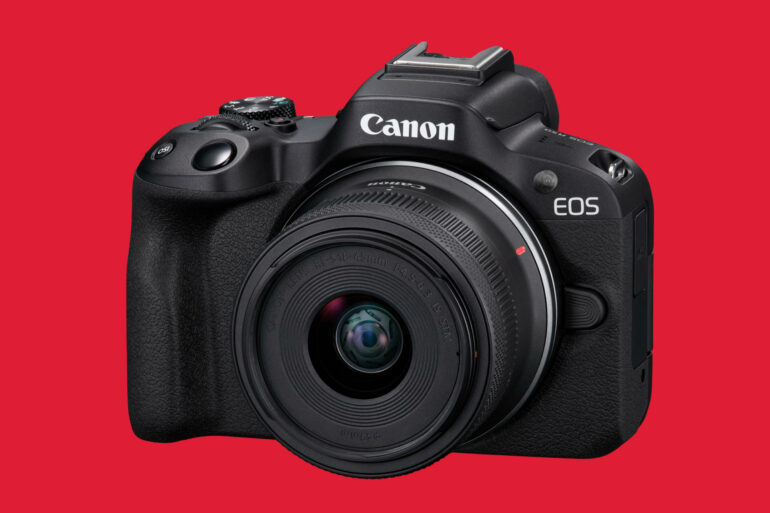Versatility and ease of use are the major focal points of the new Canon EOS R50 camera recently announced by the global photography company.
Intended as a gateway into the EOS R range of cameras, particularly for those who have never owned a standalone camera before, the mirrorless R50 takes 4K video and shoots still photos at up to 15 frames per second. As opposed to other Canon cameras like the EOS R6 Mark II and R5 C alongside the R7 and R10 models, the R50 caters for entry-level enthusiasts.
From the smartphone to Canon EOS R50
Equipped with a 24.2-megapixel APS-C CMOS sensor, the R50 is the spiritual successor to the EOS M50 Mark II, Australia’s best-selling mirrorless camera. One of the key differences is that the newer model is compatible with the current RF technology, along with the advancements it brings. It means glass like the vlogger-centric RF lenses announced last year will work seamlessly with the R50. Plus, Canon’s EF lenses remain compatible via an adapter.
As part of attracting smartphone photographers the Canon EOS R50 streamlines taking photos with a simplified control layout. Those used to the touch screen of a phone can also use the camera’s touch screen interface, and you can tilt the screen out to help photograph from different angles. Or for a more traditional approach, its electronic viewfinder lets you view down the lens barrel. Various auto settings help budding photographers get the right exposure levels, including a feature called Advanced A+ that adjusts exposure in the post-processing stage.

Another one of the big improvements the R50 introduces over the M50 is the advanced autofocus technology seen across many of the EOS R cameras. This helps track people’s faces as well as animals and vehicles, taking advantage of 651 autofocus areas, up from the predecessor’s 143. The R50’s even lighter, too, weighing a slender 375 grams.
Connectivity options galore and a new lens
Even as a relatively entry-level camera, the Canon EOS R50 isn’t short on connectivity options. It supports USB-C charging, both UVC and UAC ports, and external mic input alongside its in-built stereo mic. Plus, the camera has a multi-function shoe for connecting to various other accessories and inputs necessary for upgrading your kit.
Of course, one of the main benefits of smartphone photography is how quickly and easily you can share photos. Canon’s solution is enabling Wi-Fi and Bluetooth connectivity, so you can share photos on the fly and use remote devices via the Camera Connect app.

To coincide with the new camera’s launch, there’s also a new lens: the RF-S 55-210mm F5-7.1 IS STM. Billed as a compact zoom lens, Canon advertises the RF-S 55-210mm as being suited to various types of photography, ranging from travel, to sports, and even pet portraits. Available separately, the lens will cost $649.
Canon EOS R50 release date and pricing
Out by the end of March 2023, the R50 comes in two different bundles, with pre-orders open now. The first comes with an RF-S 18-45mm F4.5-6.3 IS STM lens and has an RRP of $1,399. Your alternative is a dual-lens kit that comes with both the 18-45mm and 55-210mm lenses alongside the camera body. This one has a price of $1,699. For a limited time, both bundles include an exclusive camera strap from Australian accessory brand Status Anxiety.
With how impressive smartphone cameras are now, the Canon EOS R50 faces a unique challenge in converting phone photographers to the interchangeable lens format. Canon also unveiled the EOS R8 full frame camera, which we’ll share more details on soon.








